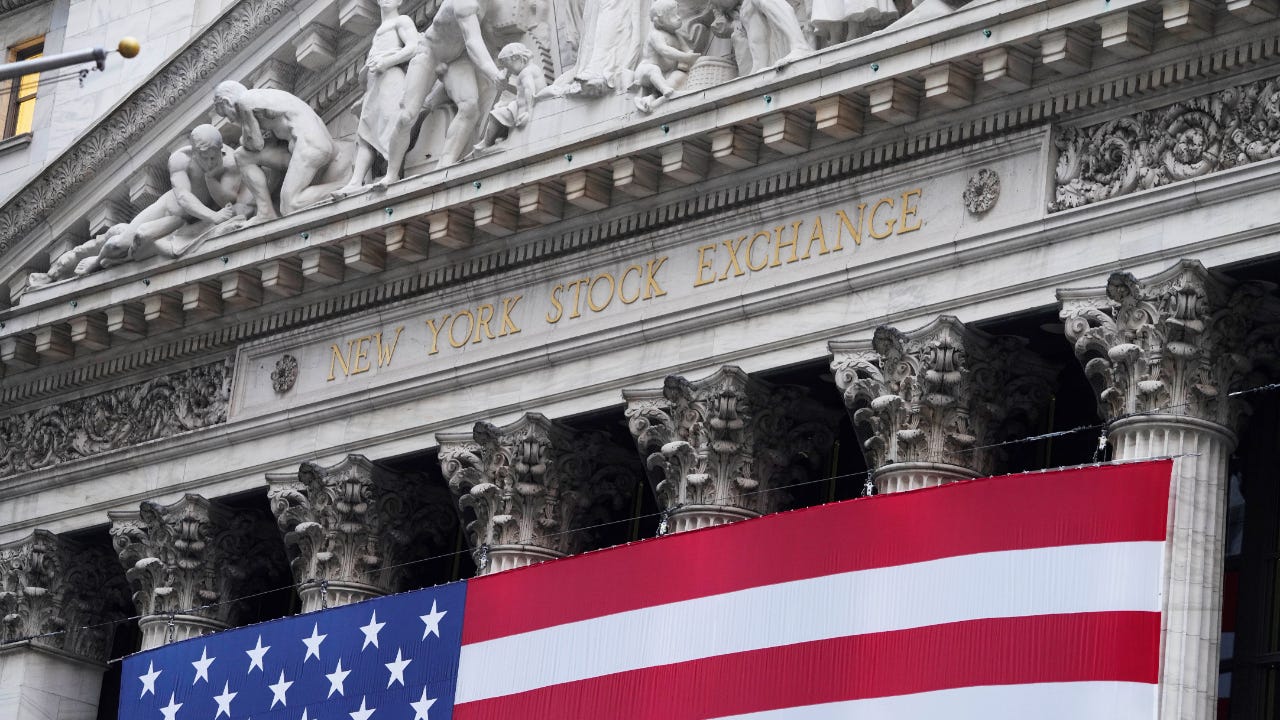7 hot IPOs to watch for in 2021

A number of hot IPOs hit the market last year, including such highly anticipated names as Airbnb, Snowflake, DoorDash, Palantir and more, as companies raced to take advantage of a resilient stock market. And while this year’s crop of IPOs may not quite have the level of name recognition as the 2020 class, there’s still a highly anticipated list of companies expected to go public during this time.
And another hot area of the market in 2021 will be SPACs, a special class of companies whose goal is to take over a private company, provide it funding and ultimately make it publicly traded. One of 2020’s brightest IPOs was DraftKings, which went public using a SPAC.
Hot IPOs to hit the market soon
More than 450 new companies raised more than $167 billion in 2020, blasting through the prior record of nearly $108 billion at the height of the dotcom bubble in 1999, according to Dealogic, a market and data analytics firm.
“I think you’re going to see that there’s pent-up demand, that IPOs increase in 2021,” says Matthew Bruderman, CEO of Bruderman Asset Management in New York City.
Low interest rates and robust investor appetite for risk make it a good time for companies to market themselves.
“I think you’re going to see more SPAC IPOs and tech IPOs,” says Bruderman, who expects a lot of quality IPOs, but sees many weaker candidates looking to take advantage of the wave.
The last few months have seen valuations on new issues skyrocket in the weeks after the IPO. This “irrational exuberance” is giving some investors pause. They’re worried that it’s a repeat of the dotcom bubble and bust. But others have been much less cautious in the market’s run-up.
“Every millennial with a Robinhood account thinks they’re the greatest investor in history,” says Kristian Finfrock, president of Retirement Income Strategies, in the Madison, Wisconsin area. “The markets have been on a roll for 11 years, even with the flash crash of March [2020].”
With the market’s rapid rise from its COVID-19 pandemic lows and the furor over IPOs, he often hears clients asking, “Are these real companies?” He says clients are wondering if they’re “investing in a company where we’re buying the future or is it going to crash and burn?”
Some of 2021’s hottest IPOs are competitively well-positioned, and many investors will be buying first and reading the prospectus later, if at all.
Here are some of the most highly anticipated IPOs that are likely to be on the way this year:
1. Bumble
Bumble is a relatively newer dating and social networking app that’s grown extremely popular. While it has some fierce competition in the likes of Tinder and other top dating services, it notched more than 100 million users in 2020. Still, with more and more people meeting initially through apps rather than through traditional means these days, Bumble could be a key player in the space.
2. Roblox
Roblox is an online game as well as a game-creation platform, allowing users to develop their own games. It’s been a huge hit with kids, with more than half of its users being younger than age 13. Overall the company boasts more than 30 million daily active users around the world. One wrinkle: the company plans to go public with a direct listing rather than a conventional underwritten IPO.
3. Coinbase
If you’ve done anything with cryptocurrencies such as Bitcoin, then you’re likely familiar with Coinbase, an online exchange for digital currencies and the largest in the U.S. As the interest in crypto assets continues to heat up and trading increases, Coinbase seems like a winner, regardless of which digital currencies become dominant.
4. Robinhood
While other brokers have mobile apps, Robinhood is the name people think of when you say “stock trading app.” It’s grown its client base rapidly over the last few years — especially in 2020 amid the pandemic — with its model of no commissions and a slick, gamified app that makes it easy to trade.
Recent missteps regarding security and order routing may have tarnished the broker’s reputation a bit, and its gamification of trading has created additional negative publicity. But given its rapid growth, those recent bumps in the road likely won’t hurt the opening valuation too much.
5. Instacart
This grocery-delivery app was eyeing a 2020 IPO but ultimately didn’t get it done, so it’s likely to ring the bell in 2021. Instacart takes a consumer’s order, then assigns a personal shopper to pick out the items and deliver them to your residence, allowing consumers to avoid the hassle of shopping and, during the pandemic, the associated risks of venturing out.
6. Stripe
Stripe is a digital payments company that creates software for powering e-commerce, what it calls “economic infrastructure for the internet.” It already counts some big tech players as customers, including Amazon, Salesforce and Instacart. If the IPO happens, the fintech would likely be one of the year’s largest debuts, if not the largest.
7. Nextdoor
Nextdoor is a social network that allows you to connect with your neighborhood, organizing events and alerting your neighbors to things going on in the vicinity. It might be on the smaller end of 2021’s IPOs with a potential valuation of a few billion dollars, but the market has shown a robust appetite for social network IPOs.
SPAC IPOs are hitting records
While the “household name” IPOs garner a lot of the press, it’s important not to overlook what’s likely to be one of the biggest trends this year: SPAC IPOs. SPACs saw a record year in 2020, scoring nearly half of the year’s IPO proceeds, according to Dealogic, and the party is still raging in 2021. Without SPACs, 2020 was merely an outstanding year for IPOs, not a record.
SPACs, or special purpose acquisition companies, are formed for the purpose of funding a private company and getting it into the stock market. They typically raise hundreds of millions of dollars from investors, typically at $10 per share, and then look for a private company that they can take public. They usually have a couple years to sign a deal, or they’re forced to return the cash to investors.
SPACs usually specify the industries they’re scouting for a deal, with electric vehicle companies among the hottest sectors around, piggybacking off investors’ enthusiasm for leaders like Tesla. The SPAC effectively buys a portion of the private company with its cash, and since the SPAC is already publicly traded, the private company becomes a publicly traded company, too.
Why are SPACs suddenly so popular?
A recent Goldman Sachs report suggests that SPAC deals raised in 2020 alone could lead to around $300 billion in aggregate takeovers over the next two years, if SPACs maintained their record of contributing about 20 percent of the private company’s capital.
“The SPAC market is growing by leaps and bounds,” says David Gallers, managing partner and co-founder of Wealthspring Capital, a New York-based investment advisory firm. “And the SPAC market is off to a huge start in 2021.”
SPACs have become increasingly popular for a number of reasons. One of the biggest is that SPAC sponsors can earn a pile of money on them, even if they take a “dog of a company” public.
While outside investors put up virtually all the money for the SPAC, the SPAC’s sponsors usually take 20 percent of these shares as a bonus. If they ink a deal, they’ll keep the shares. If not, the SPAC is dissolved and investors receive their money back, typically $10 per share.
Plus, by running a publicly traded SPAC, a sponsor has more access to capital than going through private investors, and can avoid dealing with more powerful investors who can push down deal fees. They also get equity in any deal through their bonus stake in the company.
Investors may like SPACs for a few reasons. They have limited downside, since before a deal is finalized, they can demand their $10 per share back. So they get a “free look” at a deal. If the SPAC has a capable sponsor, investors may be able to own an attractive private company. If they don’t like it, they can sell the stock (maybe above $10) or request their money back.
And private companies may like the structure, because it’s much easier to go public via a SPAC than the more rigorous process of traditional underwriting and heavier SEC regulations, which limit the kind of projections that a traditional IPO can offer to investors.
But it’s not just these incentives that have contributed to the SPAC boom. With low interest rates, SPACs offer an alternative: potential upside with limited risk. Meanwhile, capital is sloshing around in the market and private equity investors have few good companies to buy.
“I don’t think SPACs are going away, because they’re the new private equity,” says Bruderman, pointing to private equity’s role of cycling companies through the public and private markets.
“There’s a broader acceptance of SPACs, and they’re going to be here to stay,” says Gallers. “SPACs have become an attractive and accepted vehicle for companies to enter the public markets.”
Bottom line
There’s no question that IPOs have caught the market’s fancy, and investors are pushing newly public stocks quickly higher, a move that looks speculative. So it’s more important than ever to stick to good investing fundamentals, says Finfrock, who suggests avoiding IPOs generally.
Still Finfrock knows that investors may get the itch to invest in a hot IPO. So he recommends investors open a separate, small “home-run account” where they can invest in IPOs and limit total losses. And if you’re investing in IPOs, he says you should be prepared to lose all of your money: “It’s exciting to get rich quickly, but almost always [these] get-rich-quick schemes don’t work.”
Learn more:
Why we ask for feedback Your feedback helps us improve our content and services. It takes less than a minute to complete.
Your responses are anonymous and will only be used for improving our website.






